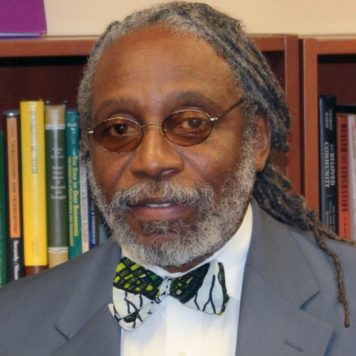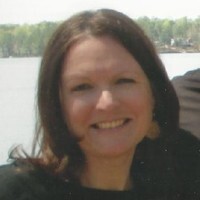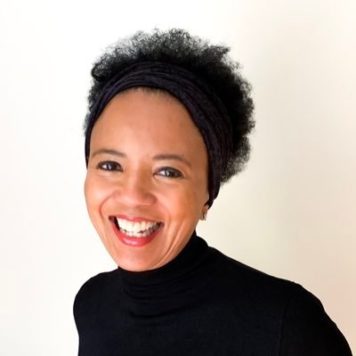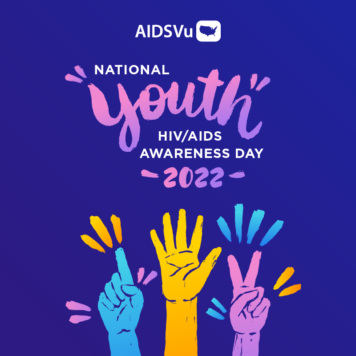Char’Lee King (she/her) is the HIV Campaigns Manager at Advocate for Youth. She oversees the implementation of Advocates’ project with the Centers for Disease Control’s (CDC) Prevention Communication Branch. Char’Lee also supports Advocates’ annual National Youth HIV/AIDS Awareness Day (NYHAAD) campaign.
Q: Your career has focused on reproductive health services for LGBTQ+ youth on both the clinical side and the advocacy side. What drew you to this work, and why did you choose to focus on adolescents and young adults specifically?
I always tell people that I didn’t choose the work, the work chose me. I am very honored to be called to do this work because it is extremely important. At many points in my career, I saw adults trying to tell young people what to do and how to do it without engaging in meaningful conversations. I saw those same adults try to scare young people away from engaging in different activities, whether sexual activities, telling them how to go to school or not to go to school, whatever the case may be, without providing them with the tools they need to make their own decisions. I chose to work with young people because I want to be able to provide them with the tools that they need to make their own choices and to be able to pull from a toolkit that they have gathered along the way to navigate all the systems that are against them most of the time.
Q: In 2013, Advocates for Youth founded NYHAAD alongside other advocacy groups and continues to direct and sponsor the event to this day. Why is this day so important and what are the goals of this campaign? Have these goals changed over time?
HIV uniquely impacts youth due to various barriers to prevention, treatment, and care. NYHAAD is so important because young people ages 13 to 24 made up 20% of new HIV diagnoses in 2020. But they are the least likely to be linked to care. For every 100 youth diagnosed with HIV in 2018, 79 received some HIV care, 58 stayed in care, and only 60 were virally suppressed. The goal of NYHAAD is to get young people involved in efforts to destigmatize HIV and increase access to care through advocacy led by young people. Although the goals of NYHAAD have not changed, we have made some campaign demands more realistic and tangible.
These demands include increasing empathy and reducing the stigma about HIV and its impact on young people, both on campus and in their communities. We do a lot of organizing around creating affirming policies around HIV care, treatment, and prevention, decriminalizing HIV, and accessing HIV services—including pre-exposure prophylaxis (PrEP) and post-exposure prophylaxis (PEP) without parental consent—and updating sex education curricula to include medically accurate information about HIV. Each year we expand our reach and the activities we sponsor to meet the needs of our youth.
Q: Black men make up over half of all new HIV diagnoses among young men. What are the unique challenges faced by this demographic? What role can advocacy play in addressing these challenges?
Black men, especially those who identify LGBTQ+, face unique HIV prevention challenges. These can range from social and economic issues such as inadequate sex education to medical mistrust, to low rates of PrEP use and awareness. Young Black LGBTQ+ men are further stigmatized, rejected, and bullied due to their sexual orientation and/or gender identity. Young Black men, like all youth, deserve a safe and supportive environment in their home, school, and healthcare settings. Advocacy plays a crucial role in addressing all these challenges. Advocates for Youth has two national youth activist cohorts engaging communities around HIV organizing—known as ECHO—for young people living with HIV. Another youth cohort we work with is Youth Resource for LGBTQ+ youth of color, and we are building a pipeline of leadership in several fields that are crucial for ensuring that young people are not only participating in advocacy but are also leading these efforts on their terms.
Q: Young people aged 13-24 represent both the highest percentage of people living with undiagnosed HIV and the lowest percentage of people linked to care of any age group. What sort of interventions are particularly effective in reaching this age group?
This one is a special one to my heart. At the end of the day, it is all about building a genuine rapport with young people. They need to have a village to support them and let them know that whatever the outcome is, they will still be able to live a full life on their terms. Young people are navigating many challenges and don’t want to feel judged or unheard.
The best interventions I have been a part of care for the whole young person and don’t just offer them STI testing or HIV testing. These interventions come in the form of community events, such as skate nights, panels at local libraries, storytelling opportunities, artistic expressions, and showing up at shelters to let young people know who we were and that what we do makes a difference. We also want to show them that what they decide to do makes a difference. In my experience, young people will gravitate toward people who make them feel comfortable and that they trust. Once that trust is established, these interventions include mental health, housing, training, education, food, and healthcare resources, because we must make sure that they can deal with the diagnosis as well as their everyday lives.
Q: National Youth HIV/AIDS Awareness Day, an opportunity to raise awareness of HIV among adolescents and young adults, is on April 10th. What message do you have to the community on this day?
Your voice matters, speak up, and ask questions as it relates to your care and your body. When you know your HIV status, you can take part in your health on your own terms. If you need any support or want to be a part of any of this advocacy, you can always go to advocatesforyouth.org for more resources and information.




